Matrix completion on unstructured grids : 2-D seismic data regularization and interpolation
Released to public domain under Creative Commons license type BY.
Copyright (c) 2014 SLIM group @ The University of British Columbia."
Abstract
Seismic data interpolation via rank-minimization techniques has been recently introduced in the seismic community. All the existing rank-minimization techniques assume the recording locations to be on a regular grid, e.g. sampled periodically, but seismic data are typically irregularly sampled along spatial axes. Other than the irregularity of the sampled grid, we often have missing data. In this paper, we study the effect of grid irregularity to conduct matrix completion on a regular grid for unstructured data. We propose an improvement of existing rank-minimization techniques to do regularization. We also demonstrate that we can perform seismic data regularization and interpolation simultaneously. We illustrate the advantages of the modification using a real seismic line from the Gulf of Suez to obtain high quality results for regularization and interpolation, a key application in exploration geophysics.
Introduction
Wide-azimuth (WAZ) seismic data acquisition is designed to improve imaging, which is affected by poor illuminations in complex geological areas. Due to budgetary and/or physical constraints, WAZ data sets are coarsely sampled at irregular locations i.e., the samples are unstructured because they do not fall on a periodic grid. All the processing and imaging algorithms, for example, surface-related multiple prediction, reverse-time migration and full waveform inversion need densely sampled data to be on the grid. Therefore, seismic data regularization and/or interpolation are one of the keys pre-processing steps to provides the regularly sampled data, with a dense sampling rate (without aliasing) in all the spatial directions. Various methodologies have been proposed to perform regularization and interpolation. The simplest regularization process is called bin-centering, which moves traces from their recording locations to locations on a regular grid. Based upon the method used to perform bin-centering, amplitude of the traces may be altered and some traces may be discarded that can lead to serious errors, for example, as reported by (Hennenfent, Fenelon, & Herrmann, 2010). There exist a wide variety of wavefields reconstruction techniques via filter-based methods (Abma & Claerbout, 1995; Abma & Kabir, 2006; Spitz, 1991); Fourier based methods (Xu, Zhang, Pham, & Lambaré, 2005) and transform-based methods (Hennenfent et al., 2010; Li, Mosher, & Kaplan, 2012; M. Sacchi, Ulrych, & Walker, 1998).
More recently, rank-minimization based techniques have been introduced to interpolate the seismic data (R. Kumar, Aravkin, Mansour, Recht, & Herrmann, 2013; Oropeza & Sacchi, 2011). The key idea of rank-minimization is to exploit the low-rank structure of seismic data in some “transform-domain” when organized in a matrix. The low-rank structure corresponds to a small number of nonzero singular values or quickly decaying singular values. (R. Kumar et al., 2013) showed that the monochromatic frequency slices of the fully sampled data matrix on a regular grid have low-rank structure in the midpoint-offset (m-h) domain, while sub-sampled seismic-data matrices do not. Missing traces increase the rank or make the singular values decay less quickly in the m-h domain, an essential feature for rank-minimization techniques to be effective. The existing rank-minimization techniques assume the input data is on a regularly sampled grid. As a result, these methods are less efficient when applied to an unstructured grid because discarding (binning) the actual recording locations of the input traces introduces errors.
The objective of this paper is to present an extension to the existing rank-minimization technique on structured grids (R. Kumar et al., 2013) for the regularization and interpolation of under sampled data on an irregular grid. We establish the benefits of incorporating the unstructured sampling operator inside optimization framework via performing regularization and interpolation of seismic data that are regularly sampled along receivers, time, and irregularly sampled along sources. The extension of our work to irregularly sampled source and receiver axes is straightforward. We demonstrate the efficacy of the proposed extension on a real seismic line from the Gulf of Suez and compare it with the existing rank-minimization techniques.
Methodology
The success of rank-minimization hinges on the fact that regularly sampled target dataset should exhibit a low-rank structure in some transform-domain. The monochromatic frequency slices of seismic data on a regular grid do not exhibit a low-rank structure in the source-receiver (s-r) domain since strong wavefronts extend diagonally across the s-r plane. However, transforming the data into the midpoint-offset (m-h) domain results in a vertical alignment of the wavefronts, thereby reducing the rank of the frequency slice matrix (R. Kumar et al., 2013).
Regularization
During acquisition, seismic data is acquired in an irregular fashion i.e., sources and receivers may lie on an unstructured grid. The goal of data regularization is to preserve the low-rank structure of seismic data in transform-domain while creating a regular sampled data at the specified bins from the irregular input data. To illustrate the effects of regularization on the low-rank structure of seismic data in the m-h domain, we plot the decay of singular values in the m-h domain. We extract a fully sampled monochromatic frequency slice from a regularly sampled seismic line at high frequency (35 Hz) and transformed it into the m-h domain as shown in Figures 1(a). The 355 sources and receivers position for this frequency slice are at the centre of 12.5m, contiguous bin. From this fully sampled frequency slice; we generate 355 new sources at uniformly random locations within each bin. The data at unstructured grid is either binned using nearest-neighbor interpolation (Figure 1b) or regularized using unstructured sampling operator based rank-minimization (Figure 1c). Notice that, the decay of singular values is faster for the original data at structured grid in m-h domain. Regularization using bin-centering slow down the decay of singular values in m-h domain since binning the continuity along the wavefields, while unstructured sampling operator based rank-minimization the continuity along the wavefields, therefore, changes the decay of singular values in m-h domain (Figure 1d). Hence, incorporation of the unstructured sampling operator in rank-minimization perpetuates the low-rank structure of seismic data in the transform-domain.
Regularization and interpolation
In reality, seismic data is under sampled either along sources or receivers on irregular grids. Thus, regularization and missing trace interpolation problem can be perceived as a matrix-completion problem. Let \(X_0\) in \(\mathbb{C}^{n\times m}\) be a regularly sampled data matrix and let \(\mathcal{A}\) be a linear measurement operator that maps from \(\mathbb{C}^{n\times m} \rightarrow \mathbb{C}^p\) with \(p \ll {n\times m}\). (Recht, Fazel, & Parrilo, 2010) showed that under certain general conditions on the operator \(\mathcal{A}\), the solution to the rank-minimization problem can be found by solving the following nuclear norm minimization problem: \[ \begin{equation} \label{BPDN} \tag{BPDN$_\epsilon$} \min_{X} ||X||_* \quad \text{s.t. } \|\mathcal{A} (X) - b\|_2 \leq \epsilon, \end{equation} \] where \(b\) is a set of measurements, \(\left\| X\right\|_* = \|\sigma\|_1\), and \(\sigma\) is the vector of singular values. The linear measurement operator is defined as \(\mathcal{A} := {{R}}{{\mathcal{S}}}^H \), where \(R\) is the sampling operator, \(\mathcal{S}\) is the transformation operator from the source-receiver domain to the midpoint-offset domain and \(^H\) denotes the Hermitian transpose. The \(\ref{BPDN}\) formulation require regularly sampled data along all spatial axes, which is challenging in practice since a set of measurements \(b\) is always under sampled on an irregular grid. For that reason, we replace \(R\) with an unstructured sampling operator \(U\) which output the irregularly sampled data in the physical-domain by applying the fast Fourier transform followed by inverse non-equispaced fast Fouier transform (Kunis, 2006; Potts, Steidl, & Tasche, 2001). To solve the nuclear-norm minimization problem, we combined the Pareto curve approach for optimizing \(\ref{BPDN}\) formulations with the SVD-free matrix factorization methods, following (A. Y. Aravkin, Kumar, Mansour, Recht, & Herrmann, 2013).
Experimental results
The data set we use is a real seismic line from the Gulf of Suez with \(N_n = 355\) sources, \(N_m = 355\) receivers on a periodic interval of 12.5m and \(N_t=1024\) time samples with a temporal sampling of 0.004s. The 355 sources positions of this reference seismic line are at the center of 12.5m, contiguous bin. Most of the energy of the seismic line is concentrated inside 10-60 Hz frequency band. From this regularly sampled source positions (Figures 2a), we generate 355 new sources at uniformly random locations within each bin (Figures 2b). We use an unstructured sampling operator based on bi-cubic splines (Keys, 1981). This operator models taking samples from a densely periodically sampled data at source locations that are not on a grid. The nominal spatial sampling remains 12.5m. In all the subsequent experiments, we use 150 iterations of SPG\(\ell_1\) for all frequency slices.
To map the data to a structured grid and to avoid binning errors, we conduct the regularization and compare it to the bin-centering techniques. Figure 3a shows the resulting 12.5 m binned dataset using nearest-neighbor interpolation. Figure 3c shows the detail along late times. The wiggle traces are the binned data and the grayscale image in the background is the ground truth. We can see that binning institute large errors (Figure 3b), yielding a signal-to-noise ratio (SNR) of 7.3 dB since wavefronts need to be smooth and that needs to be dealt with properly in the sampling and binning does not do that properly. Figures 3d, 3f show the regularization results using unstructured \(\ref{BPDN}\) with a SNR of 18.6 dB. We can see that difference plot (Figure 3e) shows very low-residual between the regularized data (Figure 3d) and the ground truth (Figure 2a).
As mentioned before, seismic data are often inadequately or irregularly sampled along spatial axes. To imitate the under sampled data on an irregular grid, the fully sampled source locations at unstructured grid (Figure 2b) is used to generate 177 new sources at uniformly random locations (Figure 2c) where the minimum distance between two consecutive sources is 12.5m and the maximum distance is 130m. To show the benefits of incorporating the unstructured sampling operator in the rank-minimization, we also conduct a combined interpolation and regularization using rank-minimization techniques (R. Kumar et al., 2013), where we accomplish binning followed by the interpolation. Figure 4a shows the regularized and interpolated data using existing rank-minimization on the structured grid with a SNR of 16.8 dB. Figure 4c shows the details along late times. The wiggle traces are the regularized-interpolated data and the grayscale image in the background is the ground truth. We can see that we loose significant amount of coherent energy in the early arrivals (Figure 4b), which is caused by the errors associated with binning. Figure 4d shows the regularized and interpolated data on unstructured grids using \(\ref{BPDN}\) with a SNR of 19.3 dB. Figure 4f shows the details along late times. The difference plot (Figure 4e) shows very low-residual, which explains that, the incorporation of grid irregularity in rank-minimization helps to achieve better regularization and interpolation results.
Conclusion
We demonstrate the benefits of incorporating the grid irregularity for an unstructured data in the rank-minimization to achieve data regularization and interpolation. We establish that irregularity along spatial axes benefits the unstructured sampling operator based rank-minimization to perform better regularization of fully sampled irregular data resulting in minimal loss of coherent energy, since unstructured sampling operator preserves the low-rank structure of data in the transform-domain. We also illustrate that the proposed alteration of rank-minimization can be used to perform regularization and interpolation, simultaneously, from irregular and/or aliased data. To make the computations affordable, we use the SVD-free matrix factorization methods. The matrix factorization technique is very promising, since it is SVD-free and therefore, may be used to regularize and interpolate large-scale 3-D seismic data. We hope to report on this in the future.
Acknowledgements
This work was financially supported in part by the Natural Sciences and Engineering Research Council of Canada Discovery Grant (RGPIN 261641-06) and the Collaborative Research and Development Grant DNOISE II (CDRP J 375142-08). This research was carried out as part of the SINBAD II project with support from the following organizations: BG Group, BGP, BP, Chevron, ConocoPhillips, CGG, ION GXT, Petrobras, PGS, Statoil, Total SA, WesternGeco, Woodside.
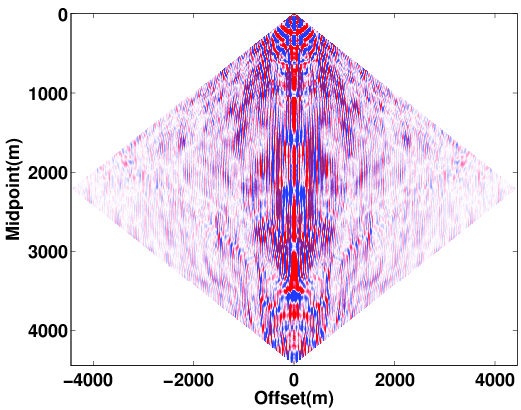
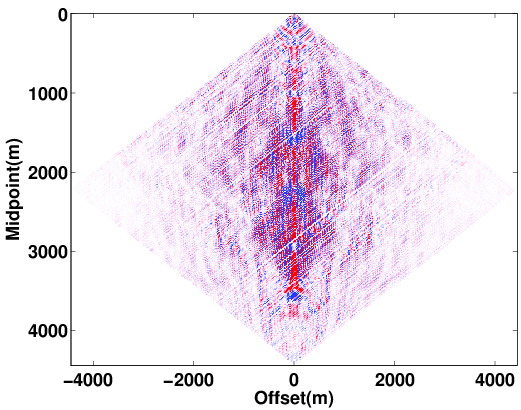
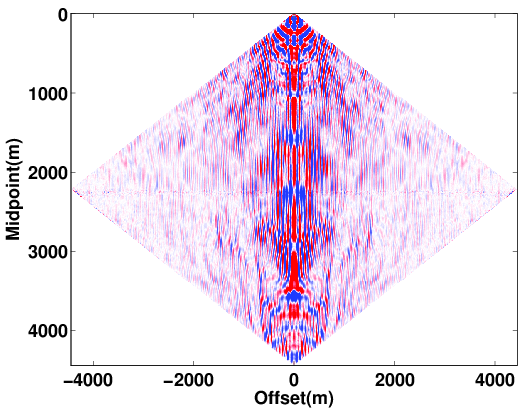
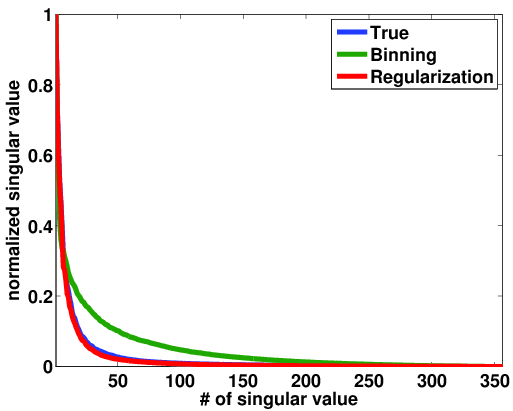
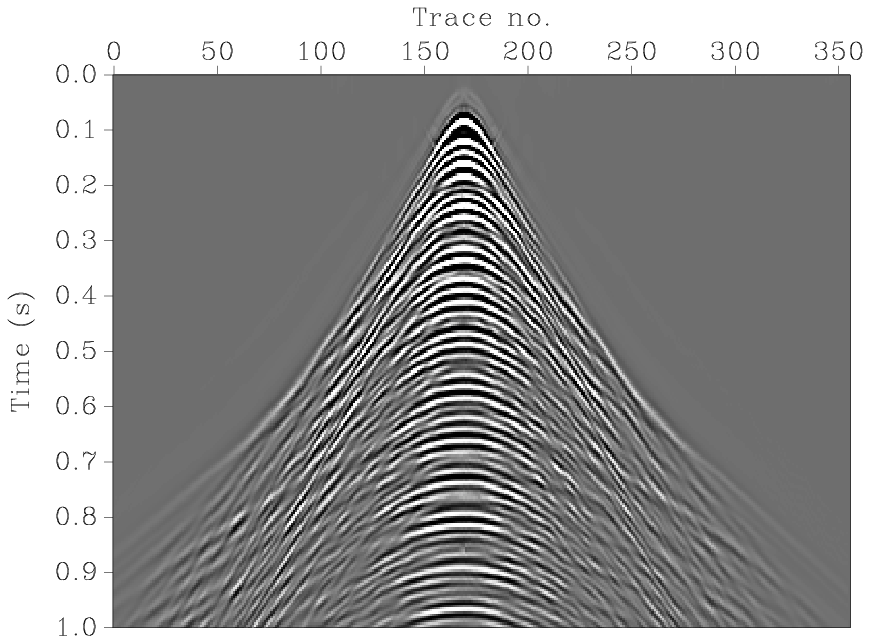
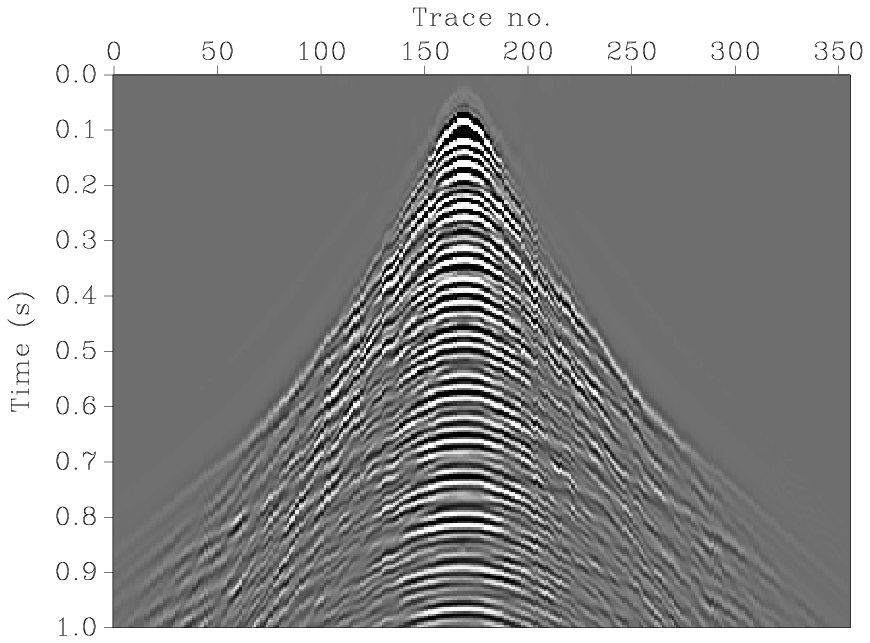
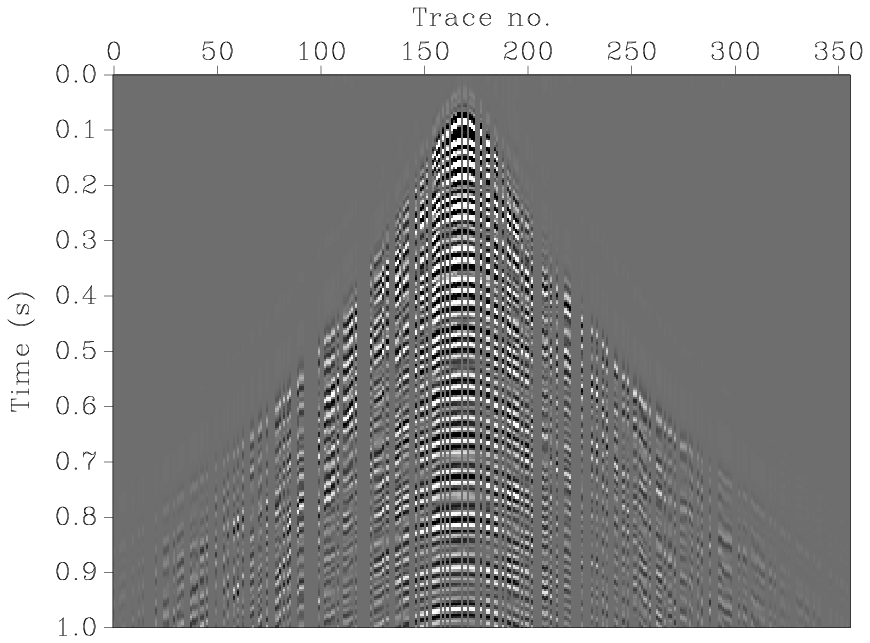
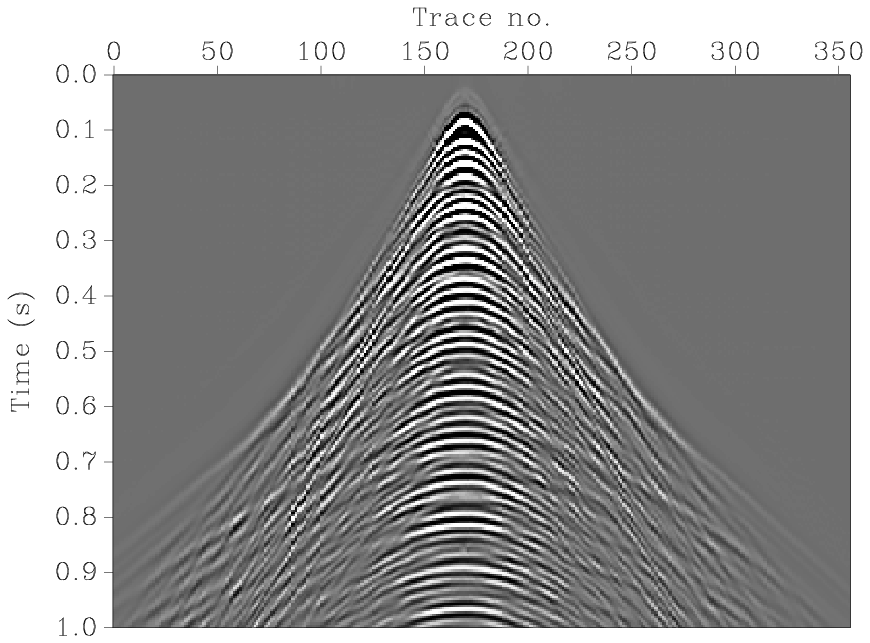
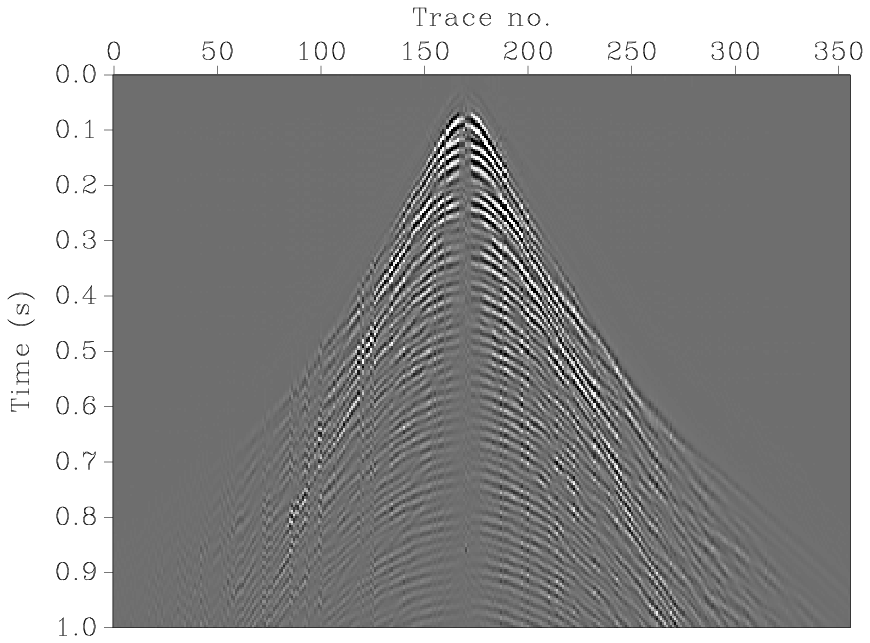
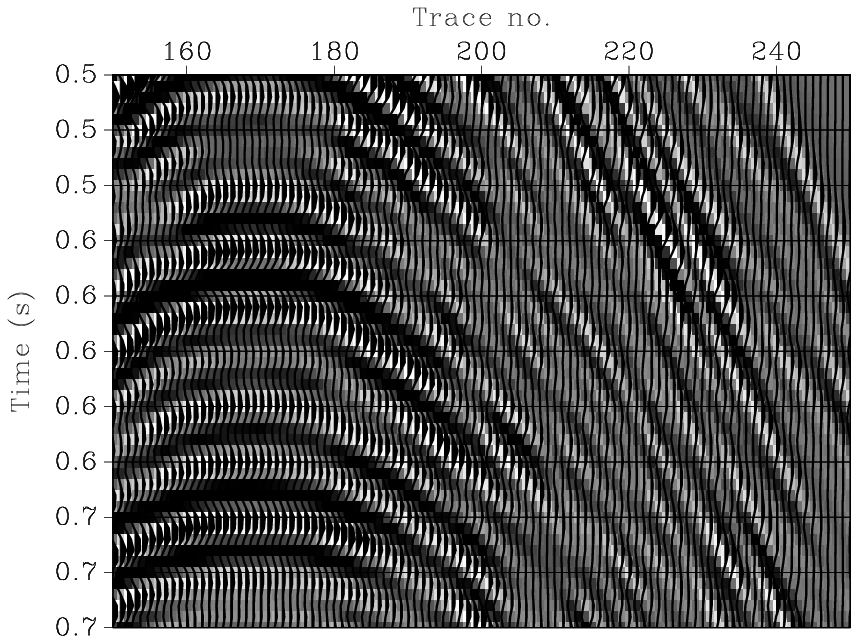
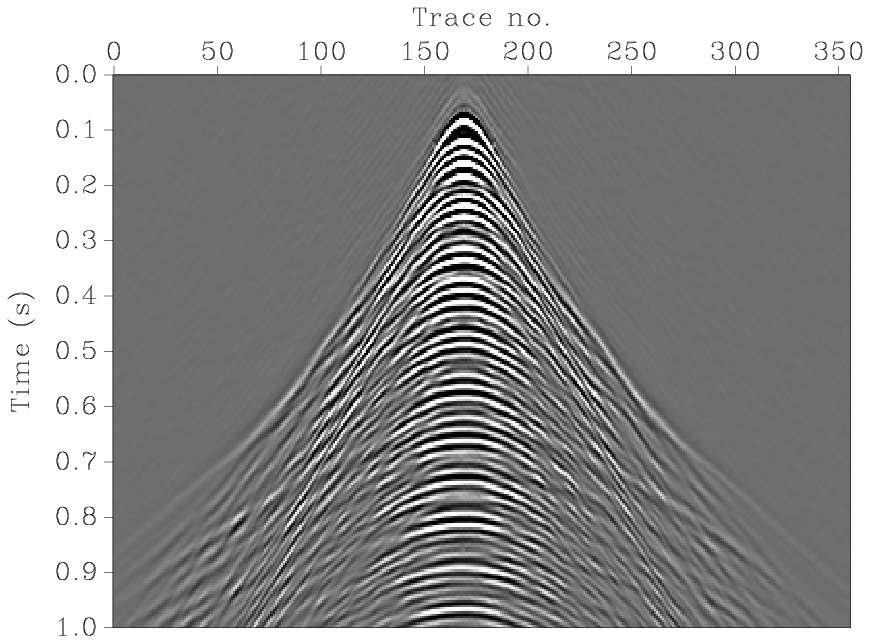
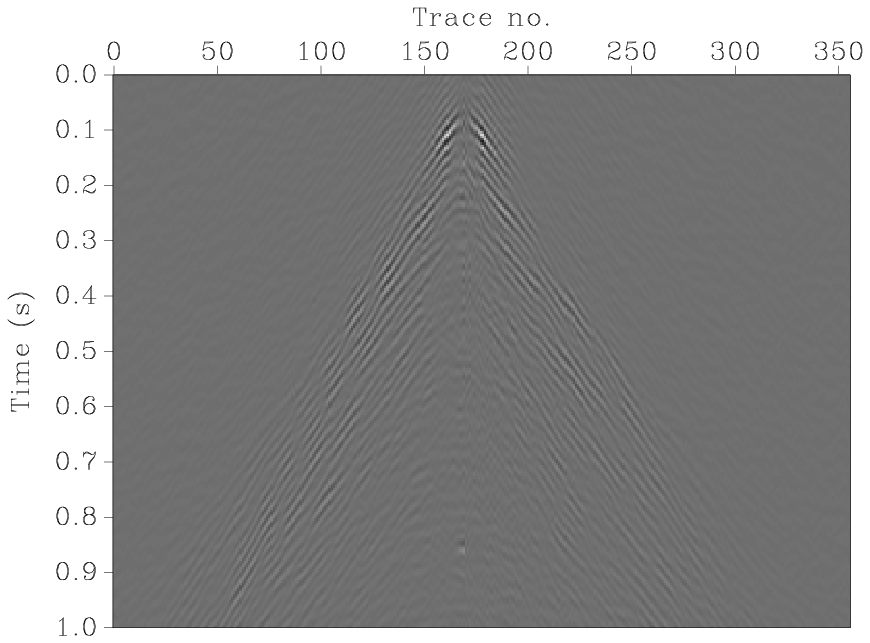
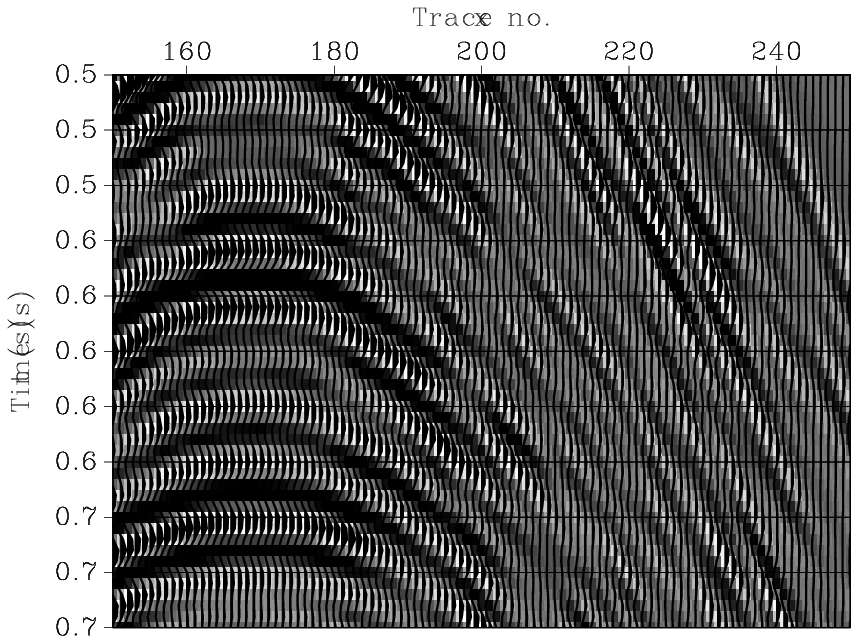
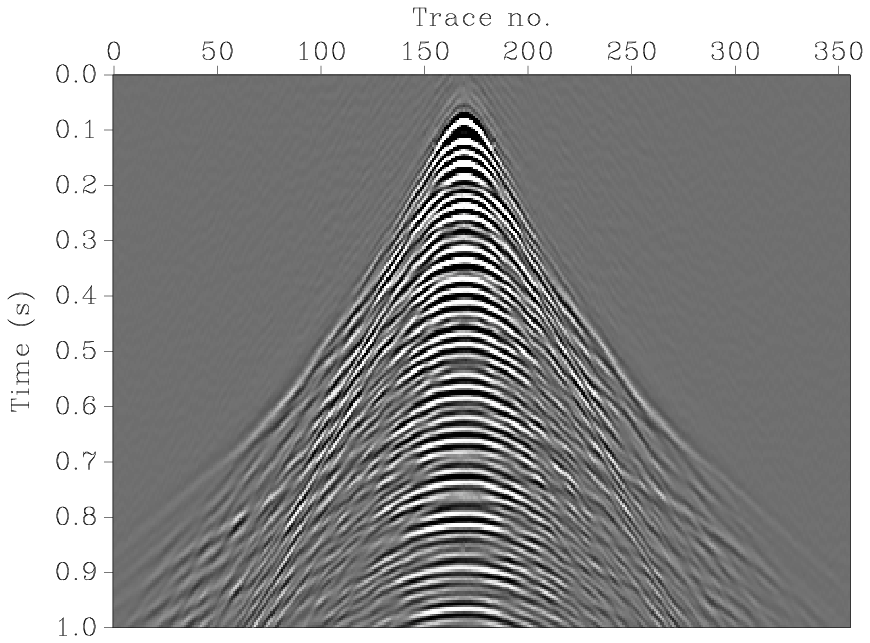
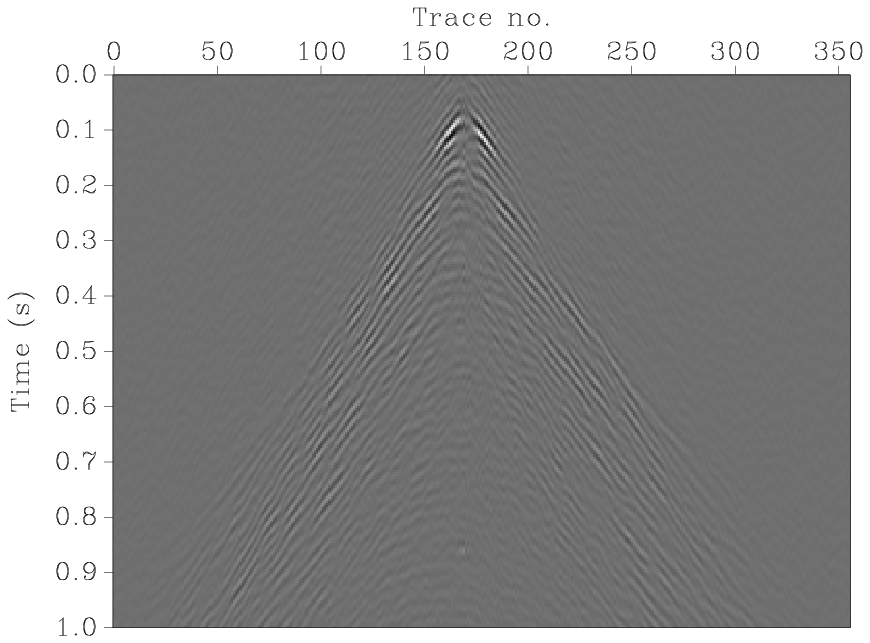
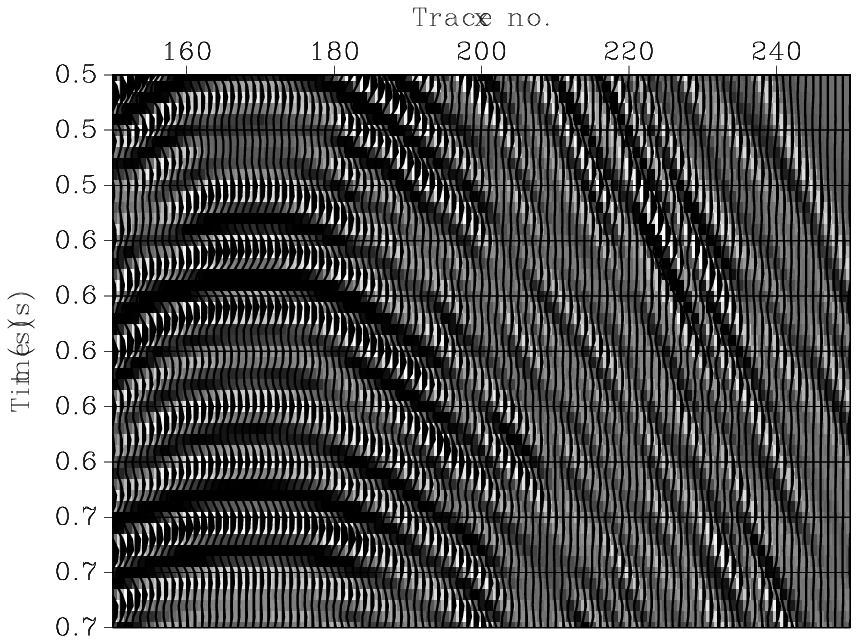
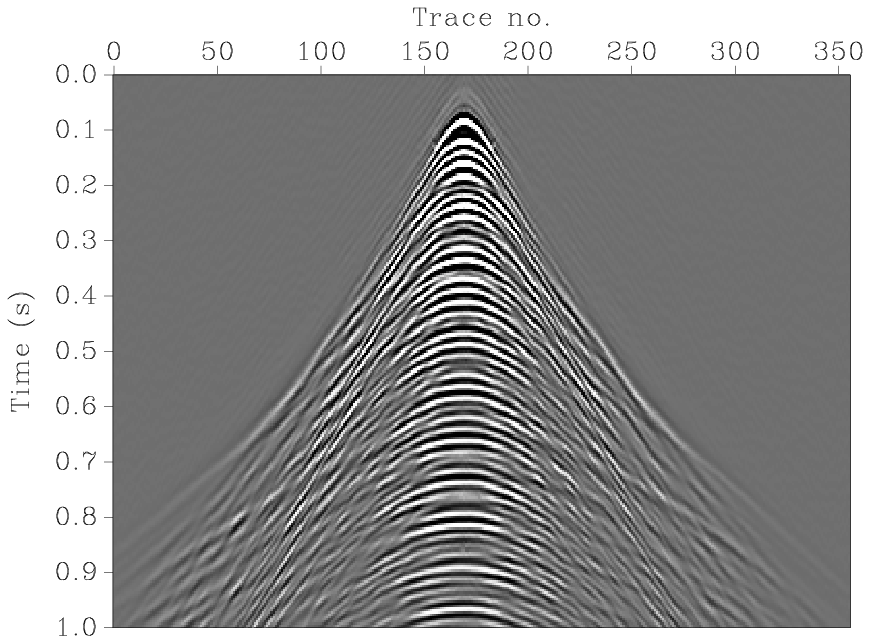
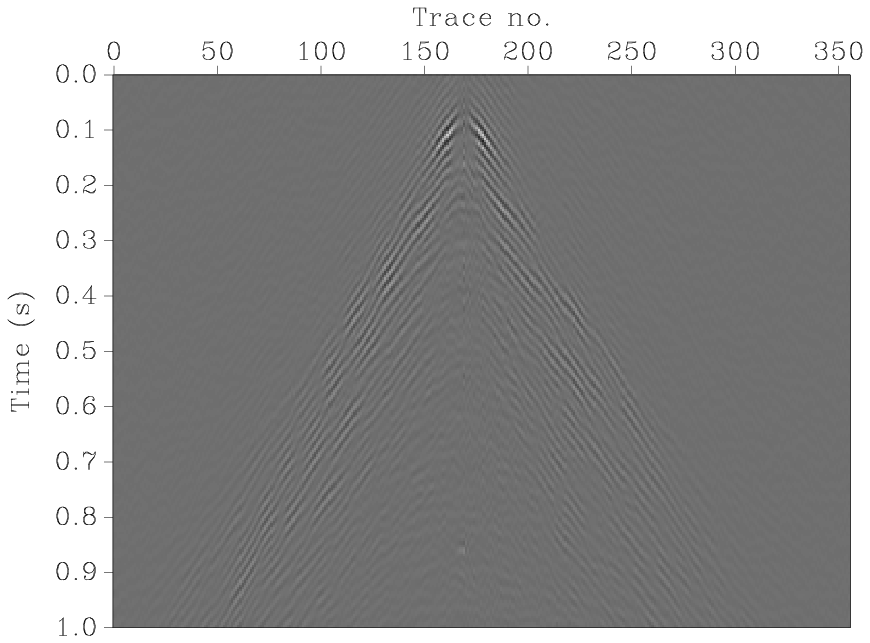
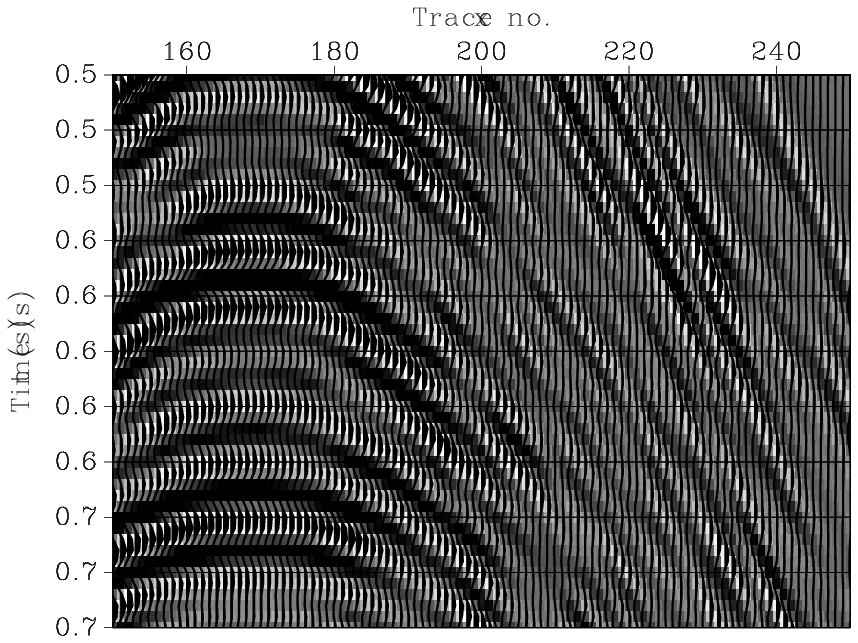
References
Abma, R., & Claerbout, J. (1995). Lateral prediction for noise attenuation by t-x and f-x techniques. GEOPHYSICS, 60(6), 1887–1896.
Abma, R., & Kabir, N. (2006). 3D interpolation of irregular data with a pOCS algorithm. GEOPHYSICS, 71(6), E91–E97. doi:10.1190/1.2356088
Aravkin, A. Y., Kumar, R., Mansour, H., Recht, B., & Herrmann, F. J. (2013, May). Fast methods for denoising matrix completion formulations, with application to robust seismic data interpolation. Retrieved from http://arxiv.org/pdf/1302.4886v3.pdf
Hennenfent, G., Fenelon, L., & Herrmann, F. J. (2010). Nonequispaced curvelet transform for seismic data reconstruction: A sparsity-promoting approach. Geophysics, 75(6), WB203–WB210. Retrieved from https://www.slim.eos.ubc.ca/Publications/Public/Journals/Geophysics/2010/hennenfent2010GEOPnct/hennenfent2010GEOPnct.pdf
Keys, R. (1981). Cubic convolution interpolation for digital image processing. Acoustics, Speech and Signal Processing, IEEE Transactions on, 29(6), 1153–1160. doi:10.1109/TASSP.1981.1163711
Kumar, R., Aravkin, A., Mansour, H., Recht, B., & Herrmann, F. (2013). Seismic data interpolation and denoising using sVD-free low-rank matrix factorization. EAGE.
Kunis, S. (2006). Nonequispaced fFT: generalisation and inversion (PhD thesis). Lübeck University.
Li, C., Mosher, C. C., & Kaplan, S. T. (2012). Interpolated compressive sensing for seismic data reconstruction. Society of Exploration Geophysicists.
Oropeza, V., & Sacchi, M. (2011). Simultaneous seismic data denoising and reconstruction via multichannel singular spectrum analysis. Geophysics, 76(3), V25–V32.
Potts, D., Steidl, G., & Tasche, M. (2001). Modern Sampling Theory: Mathematics and Applications, (12), 249–274.
Recht, B., Fazel, M., & Parrilo, P. (2010). Guaranteed minimum rank solutions to linear matrix equations via nuclear norm minimization. SIAM Review, 52(3), 471–501.
Sacchi, M., Ulrych, T., & Walker, C. (1998). Interpolation and extrapolation using a high-resolution discrete fourier transform. Signal Processing, IEEE Transactions on, 46(1), 31–38.
Spitz, S. (1991). Seismic trace interpolation in the f-x domain. GEOPHYSICS, 56(6), 785–794.
Xu, S., Zhang, Y., Pham, D., & Lambaré, G. (2005). Antileakage fourier transform for seismic data regularization. GEOPHYSICS, 70(4), V87–V95. doi:10.1190/1.1993713